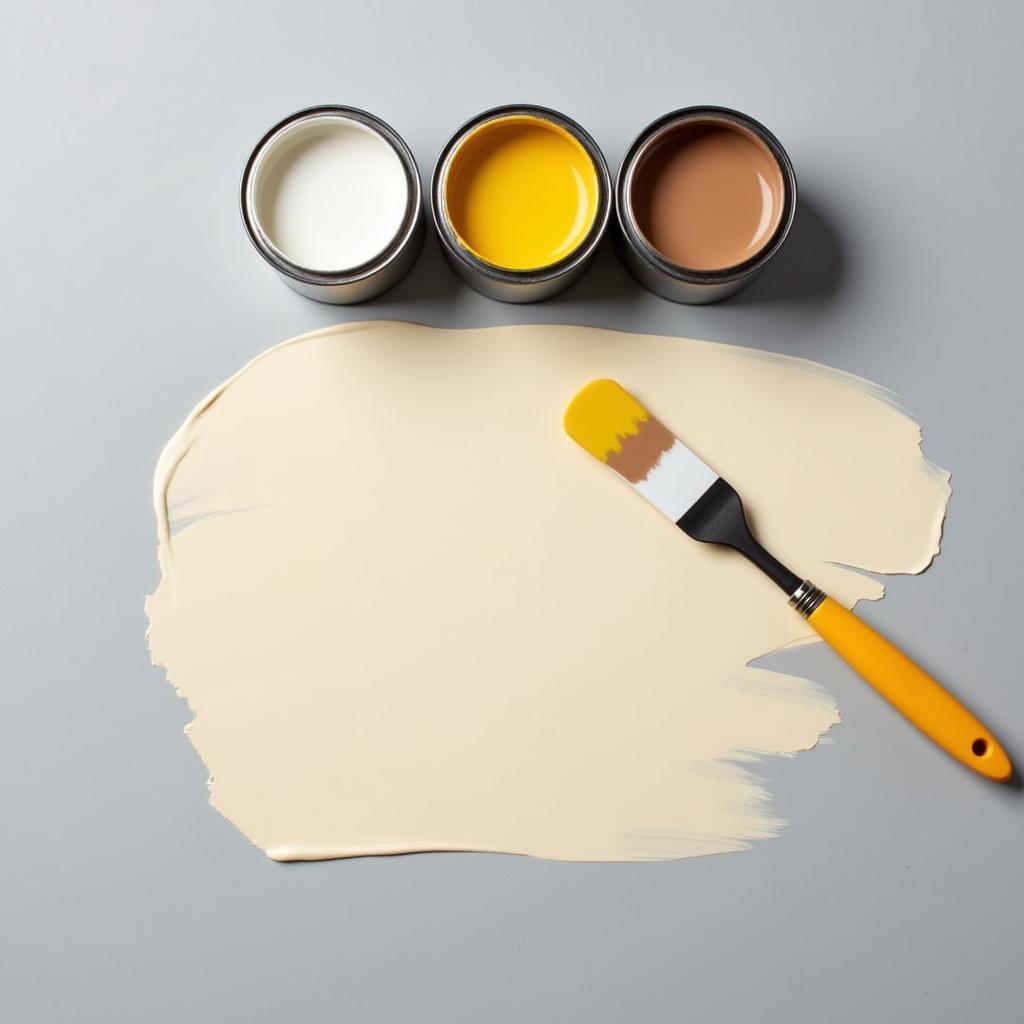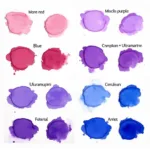Creating the perfect cream paint color can transform your space, offering a sophisticated backdrop for any design style. Whether you’re aiming for a warm, inviting feel or a cool, minimalist aesthetic, mastering the art of mixing cream paint is a valuable skill. This guide will walk you through the process, offering tips and tricks to achieve your desired shade.
Learn how to make cream color paint by understanding the interplay of white, yellow, and brown. A touch of yellow adds warmth, while brown deepens the hue, creating a spectrum of cream shades from ivory to ecru. After the introduction, we’ll dive into the specifics of color mixing, explore various cream shades, and offer expert advice to ensure a flawless finish. Let’s begin this colorful journey together!
Understanding the Basics of Cream Paint
Cream isn’t just a single color; it’s a family of subtle hues. Think of it as a nuanced blend of white, gently kissed with hints of yellow and brown. The balance of these three colors determines the final cream shade. More yellow creates warmer creams, while a touch of brown adds depth and richness. Understanding this foundation is crucial to achieving your desired cream color.
The Role of White
White serves as the base for your cream paint. The type of white you choose can significantly impact the final result. A bright, cool white will yield a lighter, crisper cream, while a warmer white will create a softer, more inviting shade. Experiment with different whites to see how they influence the final cream color.
Adding Warmth with Yellow
Yellow is the key to introducing warmth into your cream paint. Start with small amounts of yellow, gradually adding more until you achieve the desired warmth. Different yellows, like lemon yellow or ochre, will create varying undertones in your cream.
Deepening the Hue with Brown
Brown adds depth and complexity to cream paint. A touch of burnt umber or raw sienna can create a richer, more sophisticated cream. Be cautious with brown, as even small amounts can significantly darken the mixture.
 Mixing Cream Paint with White, Yellow, and Brown
Mixing Cream Paint with White, Yellow, and Brown
Exploring Different Cream Color Variations
Cream offers a spectrum of shades, each with its own unique charm. From the delicate whisper of ivory to the cozy embrace of ecru, the possibilities are endless. Let’s explore some popular cream variations:
Ivory
Ivory is a light, slightly yellowish-white, reminiscent of elephant tusks. It’s a classic, elegant shade perfect for creating a serene and sophisticated atmosphere. You can learn more about creating this specific shade in our guide on how to make a cream color with paint.
Ecru
Ecru is a slightly darker cream, often with a hint of beige or gray. It offers a warmer, more rustic feel than ivory, making it ideal for creating cozy and inviting spaces.
Champagne
Champagne is a pale, shimmering cream with a touch of pink or gold. It’s a glamorous shade, perfect for adding a touch of luxury to any room.
Tips for Achieving the Perfect Cream Color
Achieving the perfect cream color requires patience and precision. Here are some expert tips to guide you:
- Start with small amounts: Always add color gradually, especially brown. It’s easier to darken a mixture than to lighten it.
- Test on a sample board: Before painting your walls, test your cream mixture on a sample board to see how it looks in different lighting conditions.
- Keep track of your ratios: Note down the exact amounts of each color you use so you can easily recreate the shade if needed.
- Consider the undertones: Pay attention to the undertones of your white, yellow, and brown paints. Cool undertones will create a cooler cream, while warm undertones will create a warmer cream.
- Mix thoroughly: Ensure your paint is thoroughly mixed to avoid streaks or inconsistencies in the final color.
 Testing Cream Paint on Sample Boards
Testing Cream Paint on Sample Boards
“Creating the perfect cream involves more than just mixing colors; it’s about understanding the nuances of light and how it interacts with your chosen shade,” says renowned color specialist, Anya Sharma, from the Color Institute of Hanoi. She emphasizes the importance of considering the room’s lighting and existing decor when choosing a cream paint color.
Conclusion
Mastering the art of how to make cream color paint opens up a world of design possibilities. From subtle ivory to rich ecru, the spectrum of cream shades offers a versatile backdrop for any space. By understanding the interplay of white, yellow, and brown, and following our expert tips, you can create the perfect cream color to transform your home into a haven of style and comfort. If you’re seeking more color inspiration, check out our guide on what is the color of mulberry.
FAQs
- What is the easiest way to make cream colored paint? Start with white paint and gradually add small amounts of yellow and brown until you achieve the desired shade.
- Can I use any type of white paint to make cream? Yes, but different whites will yield slightly different cream shades. Experiment to find the best white for your desired outcome. Maybe you are also interested in what kind of what color carpet with gray walls.
- How do I make a warmer cream color? Add more yellow to your mixture.
- How do I make a cooler cream color? Use a cool white base and minimize the amount of yellow.
- What if my cream color is too dark? Add more white paint to lighten the mixture. You can find more on how to make cream colored paint.
- How can I ensure my cream color is consistent throughout the room? Mix all of your paint together in one large container before you begin painting.
- What if I want a more natural cream color? Try adding a touch of green, like a very small amount of what color is moss, to mimic the subtle tones found in nature.
Common Scenarios and Questions
Scenario: You want a cream color that matches your existing furniture. Solution: Take a fabric swatch or photo of your furniture to your local paint store for color matching.
Question: Can I use pre-mixed cream paint instead of mixing my own? Answer: Yes, many paint stores offer a wide range of pre-mixed cream colors.
Further Exploration
Explore our website for more articles on color theory and paint mixing techniques.
Call to Action
For expert advice and assistance with your painting projects, contact Color Box Hanoi at 0373298888 or email us at [email protected]. Visit our showroom at 86 Cau Giay, Hanoi. We offer 24/7 customer support.

